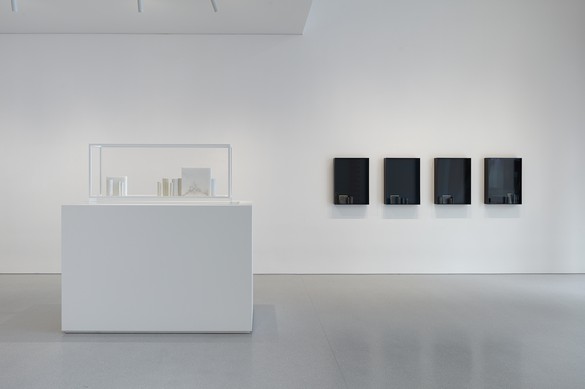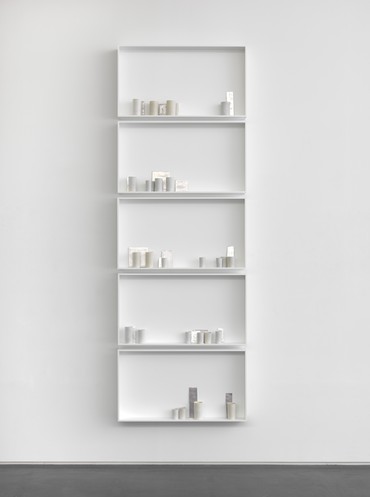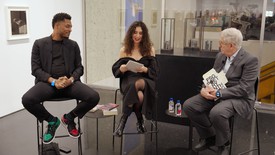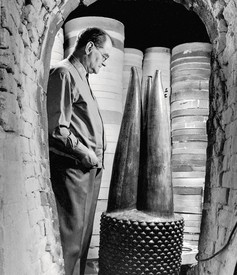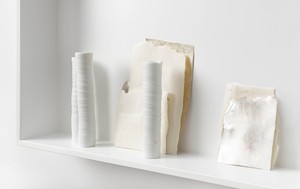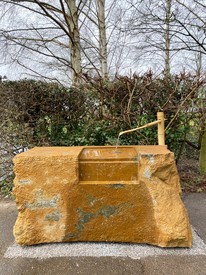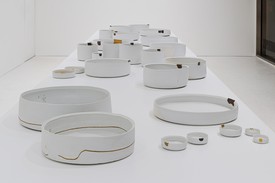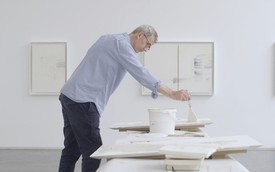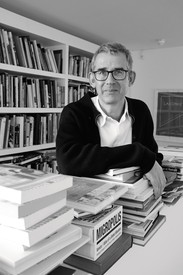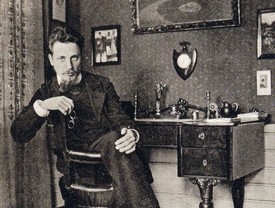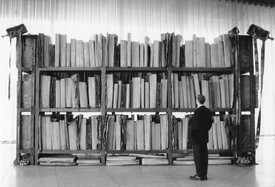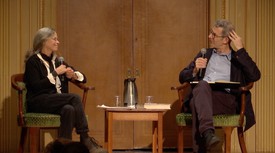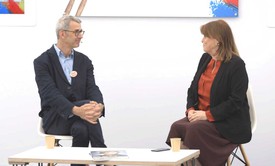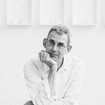
A potter since childhood and an acclaimed writer, Edmund de Waal is best known as an artist for his large-scale installations of porcelain vessels, which are informed by his passion for architecture, space, and sound.
This new series of works takes poems and vessels and puts them near each other. For years I have been writing—in notebooks, on walls, in the margins of books—but here words and porcelain come closer together. For twenty years, installations have had names that echo parts of poems, signal affinities. But here I’m trying to come closer to what it feels like to remember a poem, to carry it with you through the decades, a phrase or image coming into your life and making the world feel denser with possibility. It is rarely a whole poem. Sometimes it is just a few words. I carried Emily Dickinson’s “blue and gold mistake” throughout my thirties, trying to make celadon pots as beautiful as the early Korean and Chinese vessels. Sometimes it is the feeling of the shape of a poem on a page, the movement between two lines, the hesitancies, caesura, or pauses. Poetry is involuntary. Rilke knew this. There is the fierce lyricism of his Sonnets to Orpheus:
. . . It will end.
True singing is a different breath, about
nothing. A gust inside the god. A wind.
Vitrines are a kind of page in themselves and shelves are lines, but I’m not mapping pots as words. I’m using the shadows that objects throw, using gold, silver, and platinum to create auras. I’ve rewritten poems that mean most to me into slivers of thin porcelain, and these appear in fragmentary form. Starting places.
This exhibition’s title is stolen from Wallace Stevens. His seductions of the world and mind mean a huge amount to me. His poems are threaded by “a world of white,” a pull towards clarity and the knowledge of a falling short.
. . . The day itself
Is simplified: a bowl of white,
Cold, a cold porcelain, low and round.
Rilke and Dickinson are here too, and John Cage, whose sense of sound and graphic line and poem are a powerful presence.
There are memories and sounds and vessels and shards here.
Artwork © Edmund de Waal; Edmund de Waal: the poems of our climate, Gagosian, San Francisco, September 20–December 8, 2018
